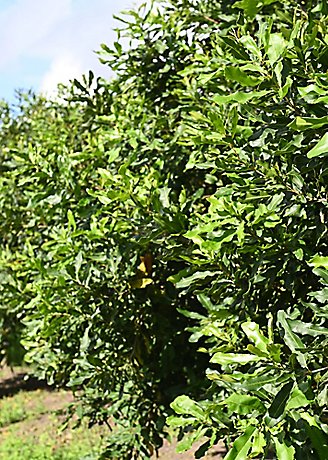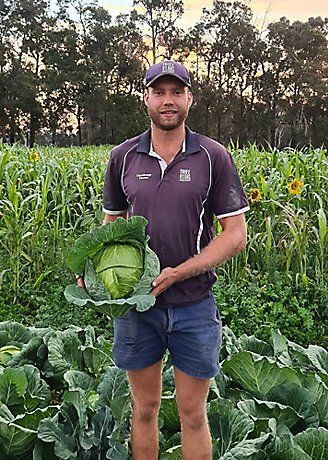One of the most intriguing native species is the Swamp Harrier which is native to the local area and often nests in crops on the property.
“The swamp Harrier is the only ground nesting raptor that I know of, and we've probably tagged 25 birds over the years,” Mr Radford said.
“I try and always keep an eye out for them because they help us. They catch rats and mice and different things and help keep our vermin under control.
“They can nest in a variety of crops. We've found them in broad beans, pyrethrum, clover, cereal and grass crops where they need some cover for their nest.
“We've got a pretty slow harvester and if you come across a nest, you leave eight square metres and they'll still come in and feed the chicks. A very interesting bird and well you see that they help us, and we try and help them."
He said one of the challenges in the area was the large number of crops that were grown so there was a real need to choose chemistries and techniques that didn’t impact onto neighbouring properties.
“I do all our chemical spraying on the property with a self-propelled, Hardy spray unit. I try and be very aware of any drift. You're always very aware of what crops are next door.”
“I hate thistles with a passion and wild radish, and you'd be flat to find many on our property. Radish seed can be in the ground for 30 years and still germinate. It's a bad weed, especially with cropping but we try and keep our weeds under control.”
“We want to turn it over down the track as good as it was or hopefully better.”
He said they used many techniques to help stop erosion on the property including cover crops in the onions.
“You plant the onions and when you spread the fertiliser you can put a cover crop in like oats, wheat or barley. Something like oats will stool out and cover the ground. When they get to 10 centimetres high and cover the ground you can spray them out with different herbicides. The oats will die off and hold the soil together.”
Mr Radford said they used a ripper mulcher across the side of the hill to lay straw in the furrows and help stop erosion and a reversible slatted board plough to push dirt uphill.
“It takes a bit longer but when you weigh it all up you probably plough multiple truckloads of dirt up hill. On one of our top fences, we've got a pivot here with a swing arm on the end. If you don't try and keep some dirt uphill, the wheels will end up worse and worse and worse and wear down the track.”



